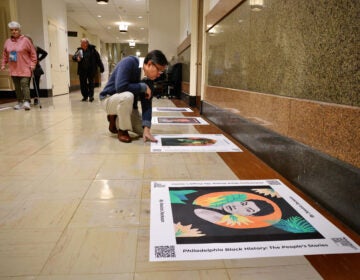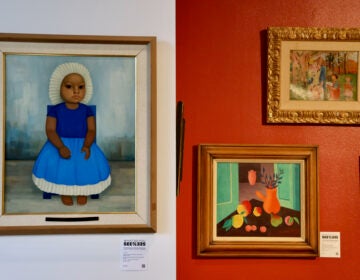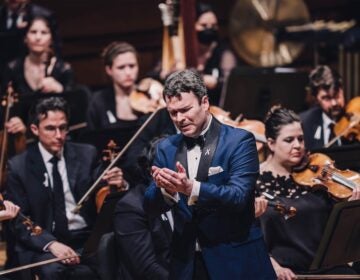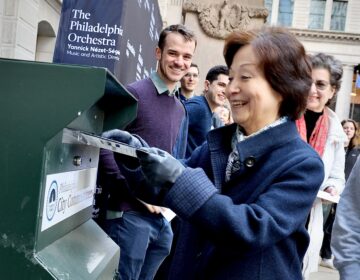The Kimmel Center’s Verizon Hall will be renamed for singer Marian Anderson
Donors of $25 million to the Kimmel Center want to rename the Philadelphia Orchestra’s home after Anderson, instead of themselves.
Listen 1:19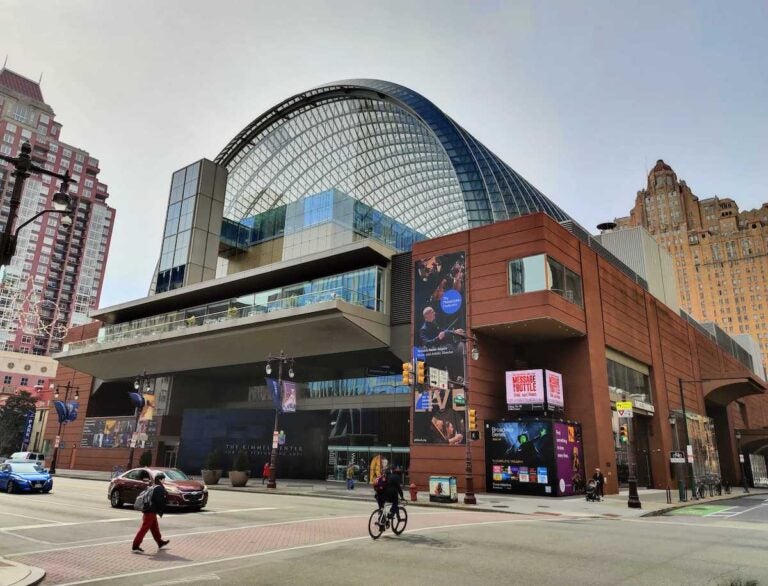
Verizon Hall at the Kimmel Center in Philadelphia, Pa. (Peter Crimmins/WHYY)
From Philly and the Pa. suburbs to South Jersey and Delaware, what would you like WHYY News to cover? Let us know!
Since it opened in 2001, the main performance venue inside the Kimmel Center, the home of the Philadelphia Orchestra, has been called Verizon Hall due to a $14.5 million gift from the cell phone service company.
That naming contract expired in January. Former orchestra board chair Richard Worley and his wife Leslie Anne Miller have jumped in and donated $25 million to the now-merged Philadelphia Orchestra and Kimmel Center, to buy the naming rights of the hall.
But in an unusual move for big-ticket donors, they are not naming it after themselves.
Instead, it will be known as Marian Anderson Hall, after the international opera star, Philadelphia native, and the first Black singer to perform at the Metropolitan Opera. The hall will be officially re-dedicated with new signage on June 8.
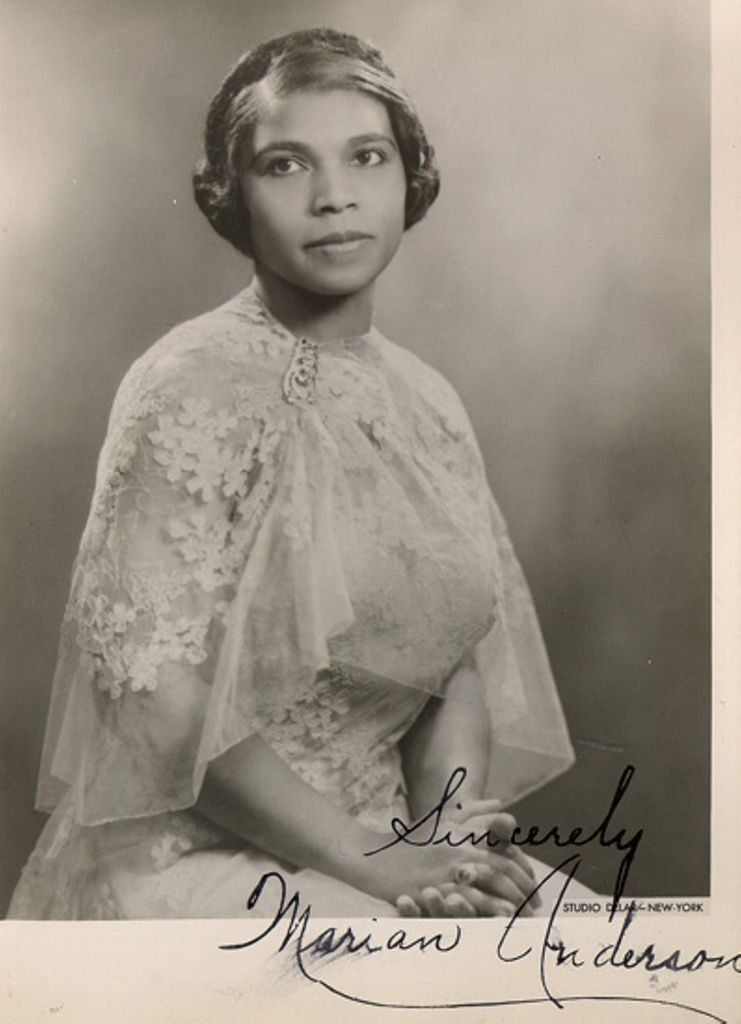
Miller had been a board member and interim president back when the Kimmel Center was still under construction as the so-called Regional Performing Arts Center. She helped finalize the original agreement with Verizon.
“While we’re so appreciative of Verizon’s commitment over those years, the chance to do something that was so long overdue — to pay tribute to Marian Anderson — was enormously appealing,” Miller said.
The decision to name the venue in honor of a musical hero runs against trends in naming rights, which often act as a form of advertising. For example, the outdoor music venue in Camden, New Jersey, now known as the Freedom Mortgage Pavilion, has changed its name seven times since it opened in 1995 as the Blockbuster-Sony Museum Entertainment Centre.
The Kimmel Center, itself, is named after a major donor, Sidney Kimmel.
“There’s nothing wrong with that and we should appreciate all the donors who contribute to the many wonderful buildings in Philadelphia where their names are attached,” said Worley. “This just happened to be a more appealing opportunity to us.”
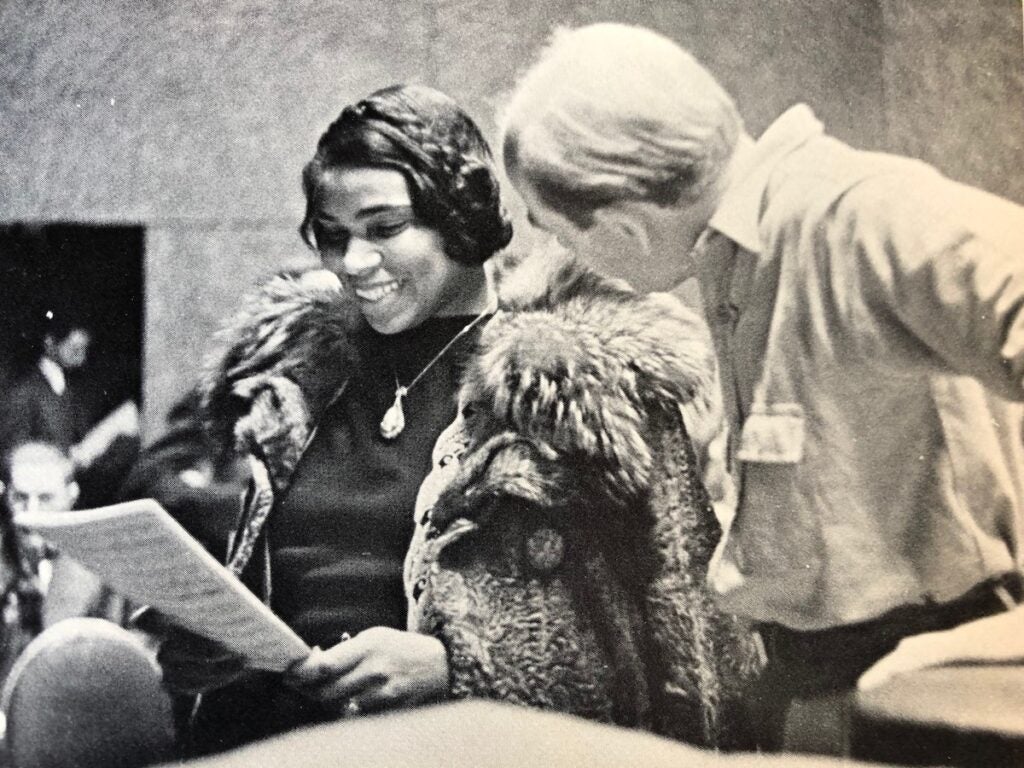
Academy of Music in 1938. (Adrian Siegel Collection/Philadelphia Orchestra Archives)
In addition to honoring Anderson, Worley said the rededication is financially prudent: The Anderson name might better drive future fundraising for building maintenance, which is needed regularly.
“I thought more people would be interested in contributing to a building named after Marian Anderson than a building named after any individual donor,” he said.
The new Marian Anderson Hall will be the only major performance venue named after the singer. Cheyney University has its Marian Anderson Music Center with a small auditorium, and those prone to quick internet searches may discover UCLA has a Marion Anderson Hall, but check your spelling — that is a business management school named after someone else.
The decision to rename Verizon Hall has been years in the making. Orchestra and Kimmel Center CEO Matias Tarnopolsky said the Anderson legacy is more aligned with the current mission of the orchestra. In the last several years the orchestra made strides to diversify its repertoire, including works by composers William Grant Still and Mary Lou Williams, premieres by Valerie Coleman and a Grammy-winning recording of pieces by Florence Price.
“We’ve been on a journey of making the repertoire more inclusive, diverse, equitable,” Tarnopolsky said. “The adage that, ‘If you can’t see it you can’t be it,’ is very important. We want to make sure everyone feels welcome here.”
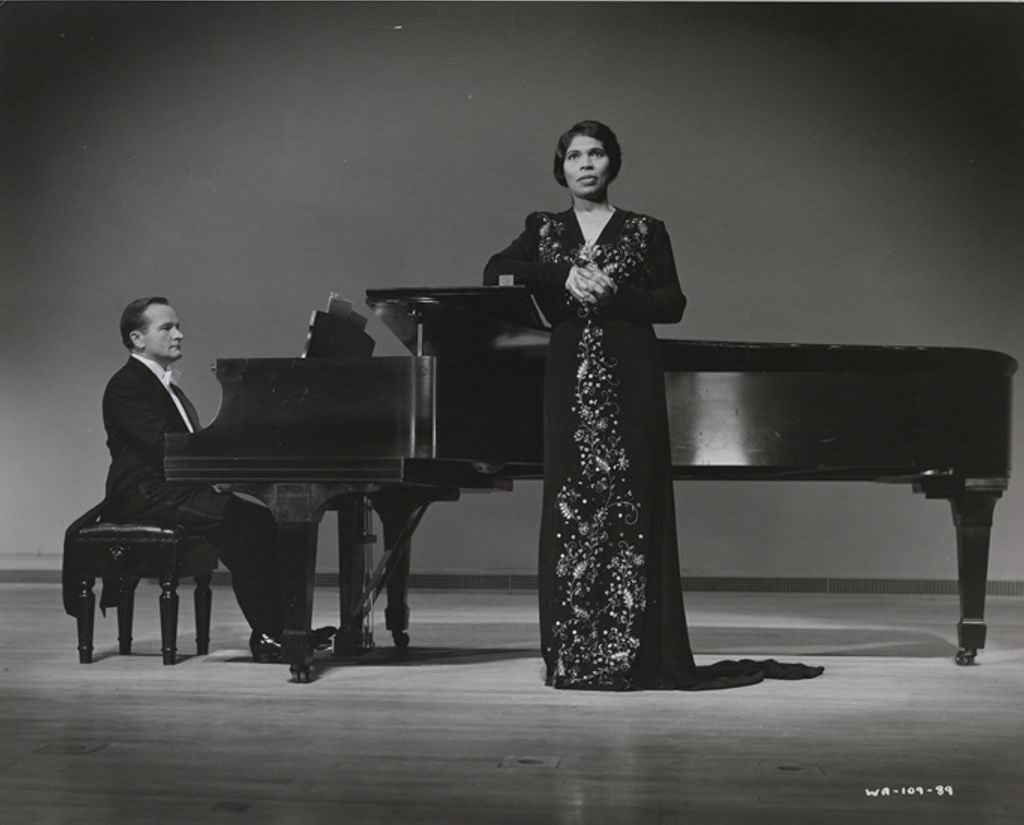
‘A civil rights legacy’
The Anderson legacy will soon be reinforced by a new statue of the singer expected to be erected next year on the Kimmel Cultural Campus, the name for a cluster of performance venues along South Broad Street.
The artist for the life-size statue of Anderson has been named — Tanda Francis — and about 65% of the estimated $1.2 million cost has been raised, according to Fred Stein, who is spearheading the project with the Marian Anderson Historical Society and Museum, in South Philadelphia.
“Folks from Philadelphia and visitors from around the world who know the name Marian Anderson, they’re going to flock to her,” he said. “Yet a younger generation, let’s say under 40 for instance, really doesn’t know the name Marian Anderson.”
Anderson broke a musical race barrier in dramatic fashion in 1939 when the Daughters of the American Revolution denied her from performing in Washington D.C.’s Constitution Hall because she was Black. First Lady Eleanor Roosevelt responded by quitting her membership with the DAR and supporting an effort to present Anderson on the steps of the Lincoln Memorial. The open-air concert became a national sensation, attracting 75,000 people and heard by millions more as a radio broadcast.
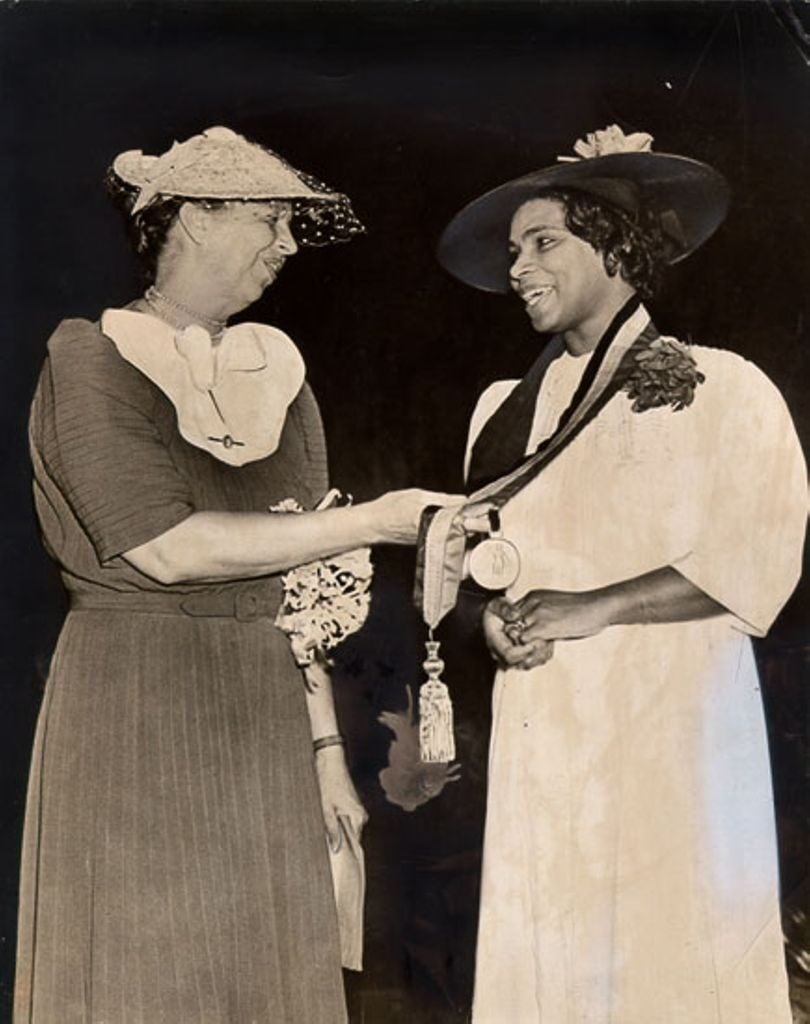
Anderson went on to have a long and successful career, performing on radio, television and stages around the world, eventually breaking another race barrier at the Metropolitan Opera as its first Black performer in 1955. She sang at President Eisenhower’s inauguration ceremony in 1957 and later became a U.S. goodwill ambassador.
She died in 1993, at age 96.
The CEO of the Marian Anderson Museum, Jillian Pirtle, said the museum was not involved in the effort to rename Verizon Hall after Anderson, but they are happy to see it happen.
“Marian Anderson Museum and Historical Society feels very honored that our Marian Anderson is going to have this divine honor,” she said. “Because of everything that she meant to the city of Philadelphia from those who embraced her, because of everything that the Academy of Music meant to her historically, being what she called her favorite theatrical home, it is quite a moment.”
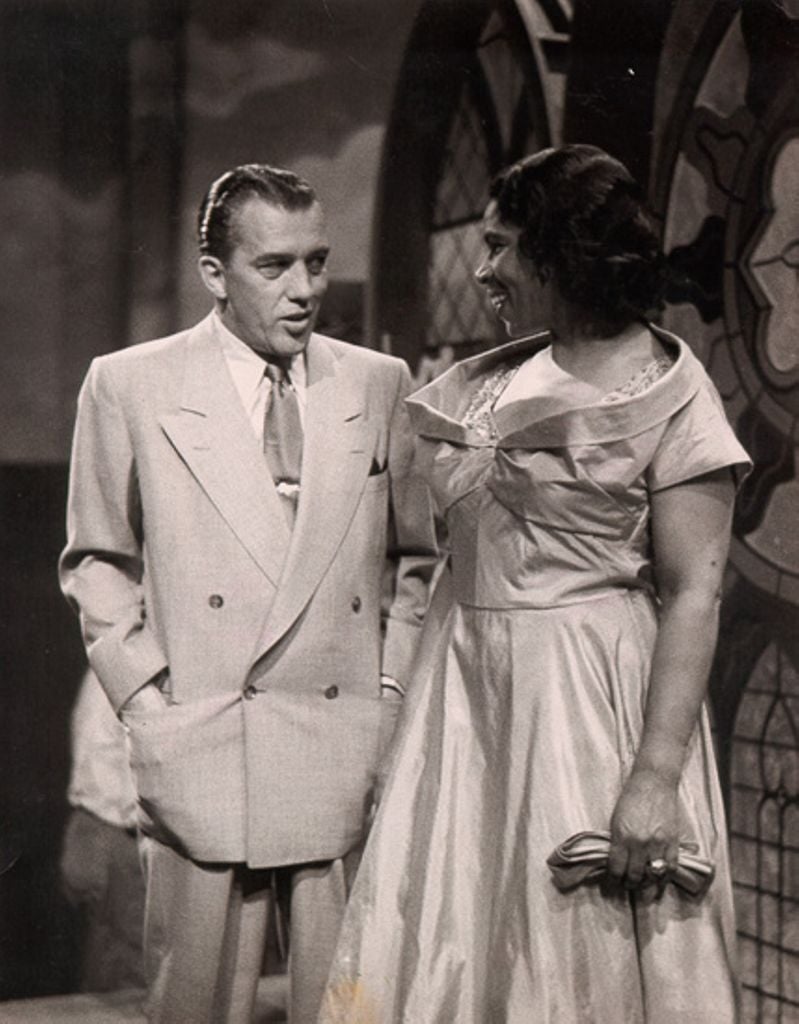
Having gone after public funds from the city and state amounting to “several hundred thousand dollars,” said Stein, the campaign is now starting to go after private donations. Stein believes the Kimmel Center’s renaming dedication will open some purses.
However, there may be some negotiating still afoot to site the statue. Stein would like it to be placed on the sidewalk outside the historic Academy of Music, owned by the Kimmel Center and where Anderson once performed. But according to Tarnopolsky, the Kimmel Center may prefer the statue closer to its newly renamed hall.

Get daily updates from WHYY News!
WHYY is your source for fact-based, in-depth journalism and information. As a nonprofit organization, we rely on financial support from readers like you. Please give today.



